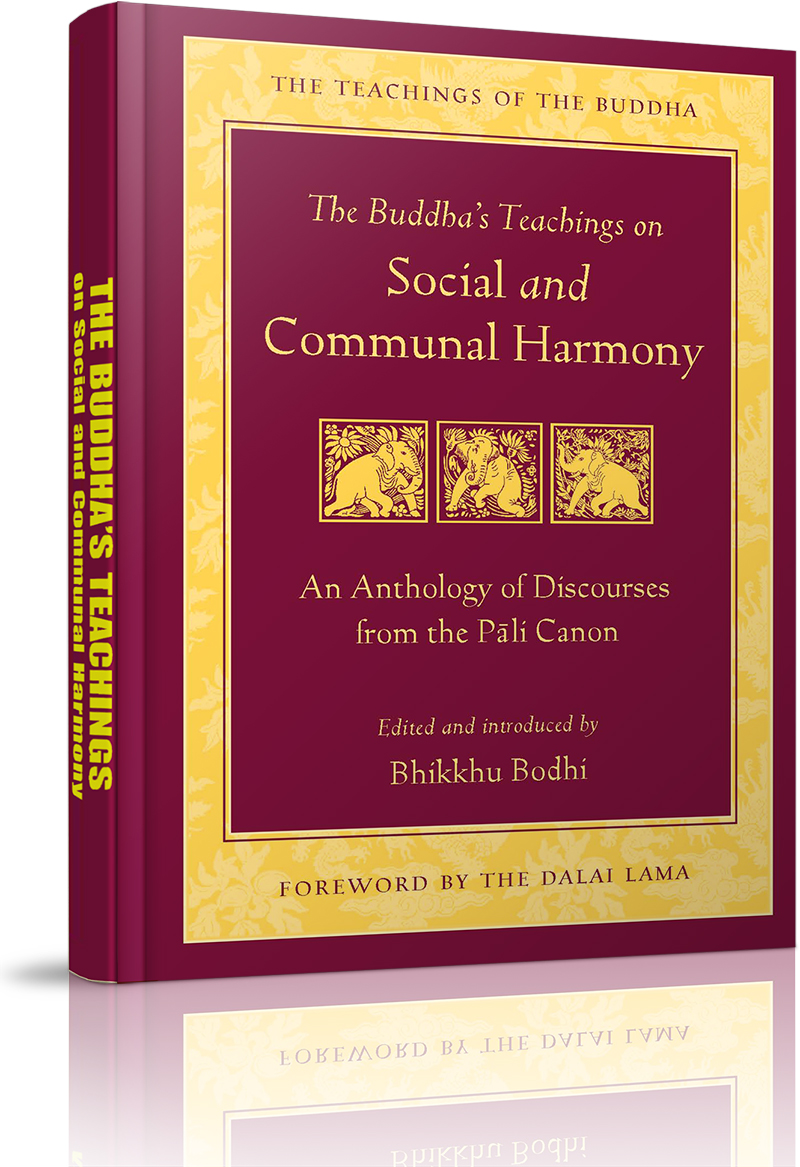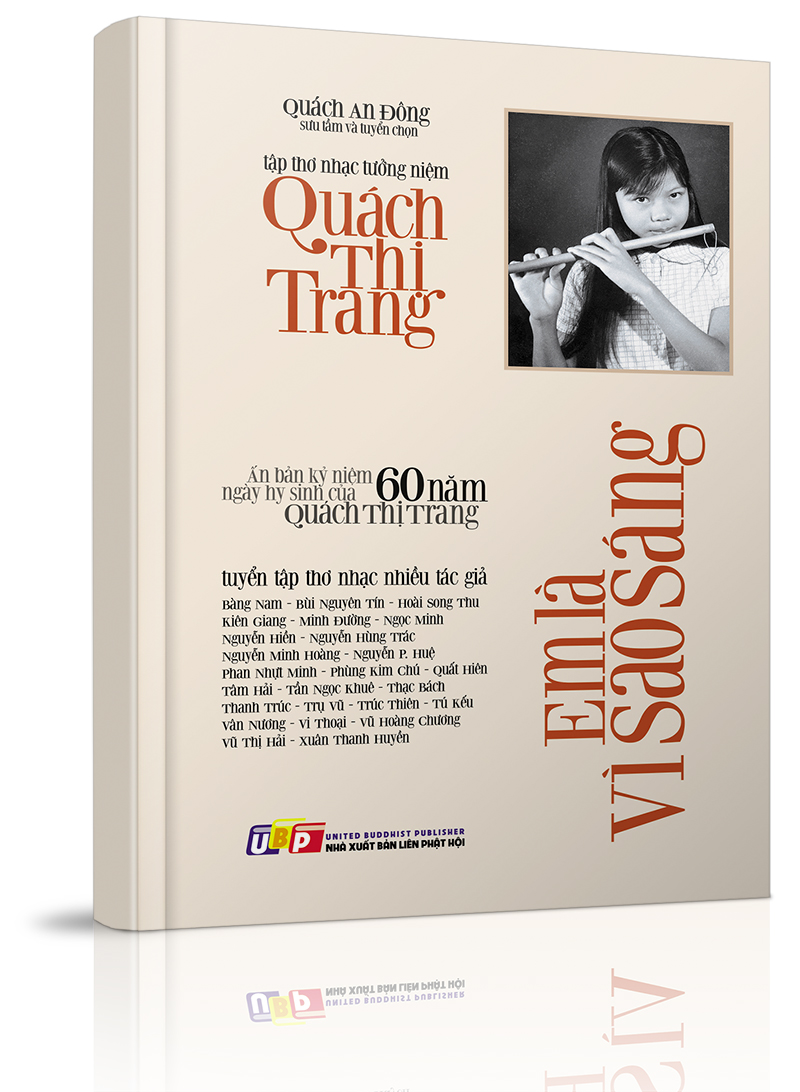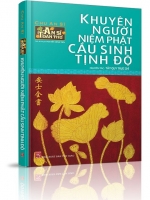Nỗ lực mang đến hạnh phúc cho người khác sẽ nâng cao chính bản thân ta. (An effort made for the happiness of others lifts above ourselves.)Lydia M. Child
Mục đích của đời sống là khám phá tài năng của bạn, công việc của một đời là phát triển tài năng, và ý nghĩa của cuộc đời là cống hiến tài năng ấy. (The purpose of life is to discover your gift. The work of life is to develop it. The meaning of life is to give your gift away.)David S. Viscott
Việc đánh giá một con người qua những câu hỏi của người ấy dễ dàng hơn là qua những câu trả lời người ấy đưa ra. (It is easier to judge the mind of a man by his questions rather than his answers.)Pierre-Marc-Gaston de Lévis
Thành công là khi bạn đứng dậy nhiều hơn số lần vấp ngã. (Success is falling nine times and getting up ten.)Jon Bon Jovi
Người vấp ngã mà không cố đứng lên thì chỉ có thể chờ đợi một kết quả duy nhất là bị giẫm đạp.Sưu tầm
Chúng ta có lỗi về những điều tốt mà ta đã không làm. (Every man is guilty of all the good he did not do.)Voltaire
Chúng ta không thể đạt được sự bình an nơi thế giới bên ngoài khi chưa có sự bình an với chính bản thân mình. (We can never obtain peace in the outer world until we make peace with ourselves.)Đức Đạt-lai Lạt-ma XIV
Tôi tìm thấy hy vọng trong những ngày đen tối nhất và hướng về những gì tươi sáng nhất mà không phê phán hiện thực. (I find hope in the darkest of days, and focus in the brightest. I do not judge the universe.)Đức Đạt-lai Lạt-ma XIV
Với kẻ kiên trì thì không có gì là khó, như dòng nước chảy mãi cũng làm mòn tảng đá.Kinh Lời dạy cuối cùng
Cho dù không ai có thể quay lại quá khứ để khởi sự khác hơn, nhưng bất cứ ai cũng có thể bắt đầu từ hôm nay để tạo ra một kết cuộc hoàn toàn mới. (Though no one can go back and make a brand new start, anyone can start from now and make a brand new ending. )Carl Bard
Tinh cần giữa phóng dật, tỉnh thức giữa quần mê. Người trí như ngựa phi, bỏ sau con ngựa hènKinh Pháp cú (Kệ số 29)
Trang chủ »» Danh mục »» TỦ SÁCH RỘNG MỞ TÂM HỒN »» none »» Epilogue BY HOZAN ALAN SENAUKE »»
none
»» Epilogue BY HOZAN ALAN SENAUKE
 Xem Mục lục
Xem Mục lục  Vietnamese || Đối chiếu song ngữ
Vietnamese || Đối chiếu song ngữ- About Bhikkhu Bodhi
- Foreword by His Holiness The Dalai Lama
- none
- General Introduction
- I. RIGHT UNDERSTANDING
- II. PERSONAL TRAINING
- III. DEALING WITH ANGER
- IV. PROPER SPEECH
- V. GOOD FRIENDSHIP
- VI. ONE’S OWN GOOD AND THE GOOD OF OTHERS
- VII. THE INTENTIONAL COMMUNITY
- VIII. DISPUTES
- IX. SETTLING DISPUTES
- X. ESTABLISHING AN EQUITABLE SOCIETY
- »» Epilogue BY HOZAN ALAN SENAUKE

When Bhikkhu Bodhi shared with me the manuscript of this book (under its original title, Fostering Social Harmony), it was clear that this collection would have wide appeal to Buddhists in Asia and in the West, those who understand that dukkha is personally and socially constructed. No individual lives apart from the mutual influence of community, society, and nation. Society exists as the co-construction of all who live within it. Though technology ever accelerates the pace and scope of human connection and division, the social reality of mutual co-creation was as true in the Buddha’s time and place as it is in ours.
I was right about the book’s appeal. When I showed friends a printout of Fostering Social Harmony they were invariably eager to get a copy. With Bhikkhu Bodhi’s permission, very limited Burmese and English editions of the earlier version were published inside Myanmar in 2014. Queries about publication in local languages have since come from Thailand, Sri Lanka, India, and Japan. All this is encouraging, but the question remains: How might we use these teachings as good medicine to foster social harmony?
Over the last few years of teaching I have explored this question. My own Buddhist roots grow from the Mahayana soil of Zen Buddhism. From high school I have been a social activist, and that has continued now into my late sixties in ways that feel resonant with the Dharma. For nearly twenty-five years I have been closely involved with the Buddhist Peace Fellowship and the International Network of Engaged Buddhists, two respected organizational voices for socially engaged Buddhism. By personal inclination I have always been an internationalist, seeing the inverted linkages between the wealth and privilege of the West and the poverty of many millions around the world. Through the circles of BPF and INEB I have come into close contact with the suffering of those less privileged than I, and with their great faith in the liberative potential of the Buddhadhamma.
This is particularly true in India, where a Buddhist revival has given rise to a powerful movement in the land of the Buddha’s birth. This movement, inspired in the mid-twentieth century by a visionary social and religious leader, B. R. Ambedkar, has its roots in communities of India’s most oppressed, those who for thousands of years had been classified from birth as untouchable. I work among these Ambedkarite Buddhists, and with them I have explored how to use the contents of this book as living teachings. In this epilogue I will share a picture of these communities and how we studied the Buddha’s social teachings.
Because this emerging Indian Buddhism is little known in the West, to begin with I offer some background. Twenty-five hundred years ago, when the Buddha was enlightened, a community that included monks and nuns, laymen and laywomen, of all castes formed around him. A hereditary caste system, based on occupation and skin color, was already in place by the Buddha’s time. It has since evolved into a complex and hierarchical social system of graded inequality. At the top of the pyramid are the brahmins or priests. The Buddha himself was born into the warrior caste, the kshatriyas. Below them is a merchant and agriculturalist caste, the vaishyas. Shudras are laborers and servants. And below them were Untouchables, more recently called Dalits, meaning, in Hindi and Marathi, people “broken” or ground up in the wheels of oppression.1 The Buddha’s egalitarian vision included them all, but position and nobility were evaluated on the basis of ethical action and understanding.
In the Suttanipāta (v. 142) the Buddha says:
One is not an outcast by birth,
nor by birth is one a brahmin.
By action one becomes an outcast,
by action one becomes a brahmin.
But Buddhism was subject to a reassertion of brahmanist values from the first millennium CE. Later it was systematically repressed by Muslim invaders from the twelfth century on, and so it more or less disappeared as a distinct cultural force in India. Of course there are remnants woven into the culture. The nineteenth-century discovery of storied Buddhist sites inspired the Sri Lankan Buddhist revivalist Anagarika Dharmapala to call for the renascence of Buddhism in India, toward which end he founded the Maha Bodhi Society.
However caste is still a defining element of Indian society. In The Age of Kali William Dalrymple writes:
In much of rural India, caste still defines not only what you wear, but where you live, what trade you follow, whom you marry, even the colour you paint your home. Every detail of life in the traditional Indian village, where 80 percent of Indians still live, is regulated.2
By the 1920s a new figure came to prominence, agitating for the human, religious, and economic rights of the Untouchables or Dalits, India’s vast population of oppressed communities. B. R. Ambedkar was a powerful thinker and writer, who came from the untouchable Mahar caste in central India. By virtue of his brilliance, Ambedkar won scholarships to Elphinstone College in Bombay and went on to earn advanced degrees at Columbia University in New York and the London School of Economics. He returned from the West in the 1920s as one of the most educated men in colonial India, still facing the discrimination that has been the lot of all Untouchables.
In his university teaching and legal work Ambedkar became a passionate advocate for the Untouchables. Where Gandhi pursued an anticolonial and nationalist course, we can see Dr. Ambedkar as the leader of a civil rights movement. He worked to deconstruct caste oppression in India while the colonial regime persisted, until after World War II and the collapse of Britain’s empire, and into the first decade of India’s independence. Despite sharp conflicts with Gandhi, following independence Ambedkar was chosen as India’s first Law Minister. He is generally seen as the “father of the Indian constitution,” a visionary document even today.
By the 1930s Ambedkar concluded that the dominant Hindu religion, with its inherent caste discrimination, was not likely to respond to political or religious reform. At the 1935 Yeola Conference of Depressed Classes, Ambedkar declared: “I was born a Hindu, but I solemnly assure you that I will not die as a Hindu.” Over the next decade he investigated Islam, Christianity, and Sikhism — and was courted by each of these groups, who were well aware that Ambedkar’s conversion would bring along with him millions of Untouchables and the promise of wide political power. But it was Buddhism, indigenous to India, open to all, and profoundly rational, that won his heart and mind.
By 1956, feeling the shadow of mortality, B. R. Ambedkar organized his conversion to Buddhism. On October 14, 1956, at the Deekshabhoomi (Conversion Ground) in Nagpur, he took the Three Refuges in the Buddha, the Dharma, and the Sangha, and received the five ethical precepts from the senior Thera-vadin Buddhist monk in India, U Chandramani. Then Ambedkar did an unprecedented thing, particularly unprecedented for a Buddhist layperson. Turning to four hundred thousand Untouchable followers who were present, he offered them the refuges and his own twenty-two vows, which included the five precepts and the renunciation of specific articles of Hindu practice and belief. This act of conscious conversion signaled a momentous renewal of Buddhism in India. A number of mass conversions followed within weeks, transforming the spiritual identity of millions of Dalits. But by early December, less than two months later, Dr. Ambedkar had died, succumbing to complications of diabetes and heart disease.
Nearly sixty years later Buddhism is still taking root among Dalit communities. Roadside viharas and modest temples can be found in all corners of the country. A 2012 Pew Research report puts the population of Indian Buddhists near ten million. Undeclared Buddhists greatly increase that number. But caste discrimination — with daily atrocities and murders against the poorest of the poor — remains a bitter and violent fact of Indian life. The goal of social harmony, so clearly articulated by the Buddha and by Dr. Ambedkar, is as yet a distant dream.
Nagaloka, in Nagpur where the first conversion ceremony took place, is a fifteen-acre campus dedicated to the unity of Buddhism and social change, in keeping with Ambedkar’s vision. The physical heart of this peaceful campus is a forty-foot golden Buddha, sculpted as striding determinedly with his hand raised in the abhaya mudra, generating safety, dispelling fear. Within Nagaloka there is a residential training program, the Nagarjuna Training Institute, teaching young people meditation, basic Buddhism, social organizing, and the work of Dr. Ambedkar. Since 2002 more than eight hundred young women and men between seventeen and twenty-five, coming from almost every Indian state, have completed NTI’s nine-month program. Many continue in residence and study a second or third year before returning to their home region or going on to higher education.
I have been working with these young people over the last six years. My ongoing effort is to provide economic support for NTI students, raising funds in the West by sharing my experience of the social and spiritual vitality of this “new” Indian Buddhism. Each time I visit Nagaloka I offer a short but intensive course that explores the territory where Buddhist practice and social action meet. We have done units on gender in the history of Buddhism and in contemporary Indian society; race, caste, and discrimination — looking at the U.S. Civil Rights movement and Indian untouchability; storytelling as a method for crossing social barriers; and Dr. Ambedkar’s Buddhist teachings.
In November 2014 I used this book as our core text, drawing from several key sections in the course of a week:
• Right Understanding
• Community
• Proper Speech
• Anger
• Disputes and Settling Disputes
The teachings in these sections, and throughout The Buddha’s Teachings on Social and Communal Harmony, are quite clear in language and intent. Step by step they point practitioners away from what is unwholesome and toward the wholesome. But in the classroom we met a challenge. As Bhikkhu Bodhi has suggested in conversation, we found that the Sutta Piṭaka is short on ambiguity — and the world we live in is not. To put this another way, our classroom discussions, beginning with the unambiguous canonical text, quickly arrived at circumstances in which wholesome choices were not so easy to identify. Without the diamond-cutting wisdom of a Buddha, we often found ourselves in uncertainty, aware of our mixed motivations.
Actually, a ground of ambiguity is set out in the third paragraph of the very first chapter, “Right View,” drawn from the Majjhima Nikāya:
Right view, I say, is twofold: there is right view that is affected by influxes, partaking of merit, ripening in the acquisitions; and there is right view that is noble, free of influxes, supramundane, a factor of the path.
“Right view affected by influxes” implies that even as we attempt to see and act in accord with the Dharma, we are still affected by the delusion of self. “Partaking of merit” is using Buddhist practice for what we perceive as our own benefit. “Ripening in the acquisitions” means becoming or acquiring a self. These are mundane or worldly ways. Right view as a factor of the noble eightfold path is noble, free of influxes or unstained, and supramundane, beyond the traps and snares of this world.
Note that the Buddha does not say that worldly or mundane right view is equivalent to wrong view, which would be an absolutist stance. His case might be more that right view affected by influxes is a good start . . . keep going. Right view that is free of influxes and supramundane is the view of wisdom and the clarity of keeping the Dharma in mind. Take that as a goal.
The following section, also from the Majjhima Nikāya, explains how to practice with what is unwholesome, meaning our actions rooted in greed, hate, and delusion, actions that set one person against another. He asks, “What is the root of the unwholesome?”
The destruction of life is unwholesome; taking what is not given is unwholesome; sexual misconduct is unwholesome; false speech is unwholesome; divisive speech is unwholesome; harsh speech is unwholesome; idle chatter is unwholesome; covetousness is unwholesome; ill will is unwholesome; wrong view is unwholesome.
We recognize these as a version of the basic Buddhist precepts, the moral foundation of our practice. The practice of what is wholesome is simply refraining from these habitual acts, which is easier said than done.
Of course we begin in this world, with all our incomplete views and difficult relationships. At first the NTI students found this discouraging. We humans often want a set of divine instructions, signposts showing us the right way. Instead, our classroom discussion placed us in the complexity of real life and threw each of us back on our own judgment, experience, and wisdom.
This was clear when we took up the Buddha’s teaching on speech. These and similar instructions appear at several points in the body of Pāli suttas.
Monks, possessing five factors, speech is well spoken, not badly spoken; it is blameless and beyond reproach by the wise. What five? It is spoken at the proper time; what is said is true; it is spoken gently; what is said is beneficial; it is spoken with a mind of loving-kindness. Possessing these five factors, speech is well spoken, not badly spoken; it is blameless and beyond reproach by the wise. (AN 5:198)
So the Buddha’s conditions for proper speech call for words that are timely, true, gentle, beneficial or useful, and motivated by loving-kindness. The Nagaloka students, who practice a traditional loving-kindness meditation daily, were quick to agree to these instructions, but I raised a series of questions.
How does one know what is “timely”? If I am involved in a conflict with a friend, what is timely for me may not be so for my friend. What is “true”? We know that the truth is (almost) always a subjective matter. My own experience as a mediator is that two people often have mutually contradictory versions of the “truth.”
“Gentle” and “beneficial” are similarly subjective. As Bhikkhu Bodhi points out in his introduction to Part IV (p. 73):
. . . while the discourses stress the importance of establishing a gentle and compassionate attitude before criticizing others, they do not advocate speaking to others only in agreeable ways. To the contrary, they advise one to censure others when criticism is due.
A Buddha, with powers of omniscience, would not be guessing. But for most of us here in saṃsāra these four conditions of speech can be elusive. If I know my friend well, I might be able to make a good guess about what she might perceive as timely, true, gentle, and useful. And I might guess wrongly. If my difference is with someone I don’t know or with whom I already have a history of conflict, it is likely we will not agree on one or all of these points.
The fifth condition for proper speech is being “motivated by loving-kindness.” While one can, of course, fool oneself about motivation, this is the aspect of speech that we can best know for ourselves. Using the Dhamma for investigation I can determine if my wish is to connect with another person or to separate myself from him or her. Am I turning toward sentient beings or away from them?
This provoked a rich classroom discussion about speech — what we say to one another, when, and why. The value of this discussion was not that all the students came to consensus on the issue, but that we were able to have an energetic conversation and enjoy it. The students noticed that they could hold different views — agree and disagree — while remaining in relationship with each other. This is the first step toward a society that is based on critical thinking.
As we read other sections of Fostering Social Harmony similar issues arose. Investigating the ten “grounds for resentment” — see III,4 of the present volume — led to a lively debate about whether anger is understandable in the face of violence and oppressive social systems, and whether such anger is ever useful.
The chapter on “the intentional community” contains an excerpt from the Aṅguttara Nikāya’s “Book of the Sevens” — here VII,3(5) — in which the Buddha preaches the seven conditions for social harmony to the ancient North Indian Licchavis or Vajjis. Included is an admonition that “as long as the Vajjis do not abduct women and girls from their families and force them to live with them, only growth is to be expected for them, not decline.” This point touched off a passionate discussion about rape, the trafficking of women, gender oppression, and fear in the Nagaloka students’ own communities.
I saw these Indian students using the Buddha’s teaching not as dogma or doctrine, but as a guide for looking at the complexities of their real-life situations. They were learning to think for themselves and to accept a diversity of views by using the Dhamma itself.
In a 1950 essay, “Buddha and the Future of His Religion,” Dr. Ambedkar considered the conversion of Dalit communities from untouchability to Buddhism. He saw a spiritual tradition grounded in critical thinking:
[The Buddha] told Ananda that his religion was based on reason and experience and that his followers should not accept his teaching as correct and binding merely because they emanated from him. Being based on reason and experience they were free to modify or even to abandon any of his teachings if it was found that at a given time and in given circumstances they do not apply. . . . He wanted that it should remain evergreen and serviceable at all times. . . . No other religious teacher has shown such courage.
The plight of India’s Buddhists is particular to their cultural circumstances. But the many-sided discourse I describe, using The Buddha’s Teachings on Social and Communal Harmony as a jumping-off point, is inevitable. I’ve had the same kind of provocative discussions in Burma and in the U.S. Reality can’t be encompassed by truisms. Even well-intentioned people can hold a diversity of views. Yet a true vision of social harmony and tolerance points to a more peaceful world.
In a practical sense, developing our intention to connect is the key, which is done through training and practice of these teachings. Again and again the Buddha speaks to the challenge and necessity of this practice. He says:
One who repays an angry man with anger
thereby makes things worse for himself.
Not repaying an angry man with anger,
one wins a battle hard to win.
He practices for the welfare of both —
his own and the other’s —
when, knowing that his foe is angry,
he mindfully maintains his peace.
When he achieves the cure of both —
his own and the other’s —
the people who consider him a fool
are unskilled in the Dhamma.
Through our diligent effort, may we learn to find harmony even in times of conflict. As we grow in wisdom may we reflect that our “land was tranquil and not beset by thieves, and the people, with joy in their hearts, playing with their children, dwelt in open houses.”
MUA THỈNH KINH SÁCH PHẬT HỌC
DO NXB LIÊN PHẬT HỘI PHÁT HÀNH
Mua sách qua Amazon sẽ được gửi đến tận nhà - trên toàn nước Mỹ, Canada, Âu châu và Úc châu.
Quý vị đang truy cập từ IP 216.73.216.80 và chưa ghi danh hoặc đăng nhập trên máy tính này. Nếu là thành viên, quý vị chỉ cần đăng nhập một lần duy nhất trên thiết bị truy cập, bằng email và mật khẩu đã chọn.
Chúng tôi khuyến khích việc ghi danh thành viên ,để thuận tiện trong việc chia sẻ thông tin, chia sẻ kinh nghiệm sống giữa các thành viên, đồng thời quý vị cũng sẽ nhận được sự hỗ trợ kỹ thuật từ Ban Quản Trị trong quá trình sử dụng website này.
Việc ghi danh là hoàn toàn miễn phí và tự nguyện.
Ghi danh hoặc đăng nhập
... ...


 Trang chủ
Trang chủ









